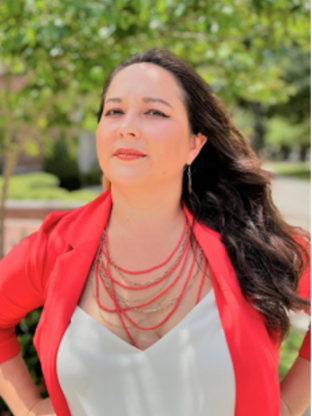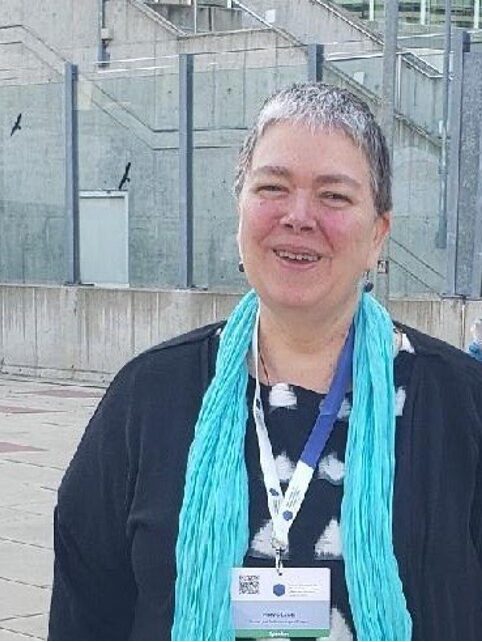This upcoming March 8 marks both International Women’s Day and the closing negotiations for the United Nations’ Treaty on the Prohibition of Nuclear Weapons Third Meeting of States Parties.
To date, surprisingly little research has been conducted on the effects of ionizing radiation on people other than adult males. Debates about the future of nuclear weapons would benefit from being informed by a more thorough understanding of radiation’s harmful impacts, and how the harm varies by age and gender.
Two people who have contributed such research to the current debate are Amanda M. Nichols and Mary Olson, who recently wrote and published a 2024 report titled Gender and Ionizing Radiation: Towards a New Research Agenda Addressing Disproportionate Harm at the request of the United Nations Institute for Disarmament Research (UNIDIR).
This new report provides an update on the literature about the correlations between gender and ionizing radiation, and I had the pleasure of being an external reviewer for this report through my work at the Union of Concerned Scientists (UCS).
Both Dr. Nichols and Ms. Olson have dedicated their work and efforts to understanding the unique health risk factors that women and girls face. Their report for UNIDIR will directly inform discussions at the upcoming March 2025 Treaty on the Prohibition of Nuclear Weapons Third Meeting of States Parties at the United Nations (UN) headquarters in New York City.


The report centers the mid- and long-term consequences of radiation exposure, especially on women and girls, which is in much need of clarification for international policymakers. The authors found disproportionate harm to females compared to males in a much wider sampling of radiation research literature than had previously been reviewed, which strengthens the finding that women and children are more radiosensitive.
Nichols and Olson conclude that girls, ages 0-5 years of age, are the most at risk among the post-birth population for developing cancer and non-cancer-related health consequences due to ionizing radiation exposure. The report also highlights that women and marginalized groups often face disproportionate health risks due to systemic inequities in health research, care, and ionizing radiation exposure.
Additionally, Nichols and Olson present a new sampling of evidence from peer-reviewed papers of health disparities since the major 2006 Biological Effects of Ionizing Radiation (BEIR) VII report commissioned by the US National Academies of Science and National Research Council. The 2024 UNIDIR report also provides an update on radiation research since the 2006 BEIR VII publication, using data from the Life Span Study of atomic bomb survivors (or Hibakusha as known in Japanese).
Overall, the 2024 UNIDIR report calls for gender-sensitive policies in radiation protection, emphasizing the need for inclusive studies and equitable practices. Nichols and Olson end the report with an extensive agenda for future age- and gender-inclusive research and a call for radiation researchers and scholars around the world to take up these questions in their own work.
UCS recently added explainers on human health and radiation exposure in a recent activist’s guide (here). UCS is committed to supporting this work and making sure that nuclear policy centers the most vulnerable populations, including women and children.
What are the biological factors making women more susceptible than men? How do societal norms affect these associations?
MARY OLSON: This question strikes at the heart of the lack of investment by funders and institutions of research excellence in responding to the news that female bodies are more harmed than are males exposed to the same level of ionizing radiation. With our report, we now have broad evidence that women suffer more from radiation than men—and additionally, that exposure of children results in greater harm than exposure of adults. Young girls are the post-birth life stage most harmed by radiation.
“That is the news, but, to date, no one has asked or answered, ‘Why are females harmed more than males?’”
—Mary Olson, Gender + Radiation Impact Project
In a mathematical exercise, leading radiation policy bodies point to breast cancer rates as the differential between overall male and female cancer rates in the Life Span Study of atomic bomb survivors. This finding has not been widely reviewed.
In addition, we have not found engagement with questions of causation like why females suffer more cardiovascular harm than males (it is likely that breasts are not a factor), or major analyses of gendered factors in radiation impacts like infertility and possible sex-based differences in pre- and post-birth development. More work is needed!
AMANDA NICHOLS: Mary is correct that this question really strikes at the heart of the primary question, which is “why”?
“The direct answer is, ‘We don’t yet know.’”
—Amanda Nichols, University of California, Santa Barbara
What we do know is that biological sex and age at time of exposure are both independent and compounding factors in radiation harm. There is also evidence to suggest that ethnicity is another compounding factor. This points to the importance of intersectional approaches to radiation research which take seriously the ways that social, environmental, and biological factors may compound and exacerbate radiological harm.
At the end of the report, you both highlight myriad questions that future research should seek to answer. What are some of the gaps in knowledge on the female body that you hope future research will fill?
AMANDA NICHOLS: One of the most important gaps in current research that radiation researchers can help to fill is the “why” question.
“Why does ionizing radiation affect females more than males, especially in childhood?”
—Amanda Nichols, University of California, Santa Barbara
What are the primary biological factors that impact radiation harm? We have some theories but, at present, we do not have enough evidence to fully support any of them.
As a humanities scholar, I also think that the most interesting questions for me are those that focus on intersectional factors, such as how race and ethnicity, environmental factors, and compounding exposures impact radiation harm and the rate of cancer and non-cancer outcomes. I’m also interested in questions about transgenerational impacts in both human and non-human organisms and in learning more about the ways that radiation, which is now dispersed around the globe, may have evolutionary impacts for all species on Earth.
These are big questions, and there is a lot that we still don’t know about radiation! This is why we invite and encourage as many people as possible who have the skills and expertise to do this research to get involved.
How can US and international policy frameworks better account for sex and gender sensitivity in radiation regulatory science?
MARY OLSON: Currently, US regulators continue to use Reference Man as the target or “dose receptor” for safety regulations for both workers and the general public. Clearly, a 5’4” 154-pound male does not center regulatory protection on those who are most harmed, such as women and children.
“It is time to thank Reference Man for his service, give him a gold watch, and send him off for retirement.”
—Mary Olson, Gender + Radiation Impact Project
We need a broad, competitive request for proposal (RFP) for the best and the brightest to propose alternative methods to center radiation (and perhaps other environmental exposures) on those most harmed!
AMANDA NICHOLS: Several countries and nonprofit organizations have now adopted alternative models of sex-averaged individuals for setting radiological protections—which we outline in our report. Examples cited in the report are here, here, here, and here.
As we noted, these models are also insufficient because they fail to set the standards for radiation protection based on the (post-birth) population which is the most harmed from exposure: little girls between the ages of 0 and 5.
Mary has called for and is now working to develop a model based on “Reference Girl.” As we say in the paper, “The rationale for the Reference Girl model is that representing those most at risk would result in greater protections when applied to all other parts of the human lifecycle.”

